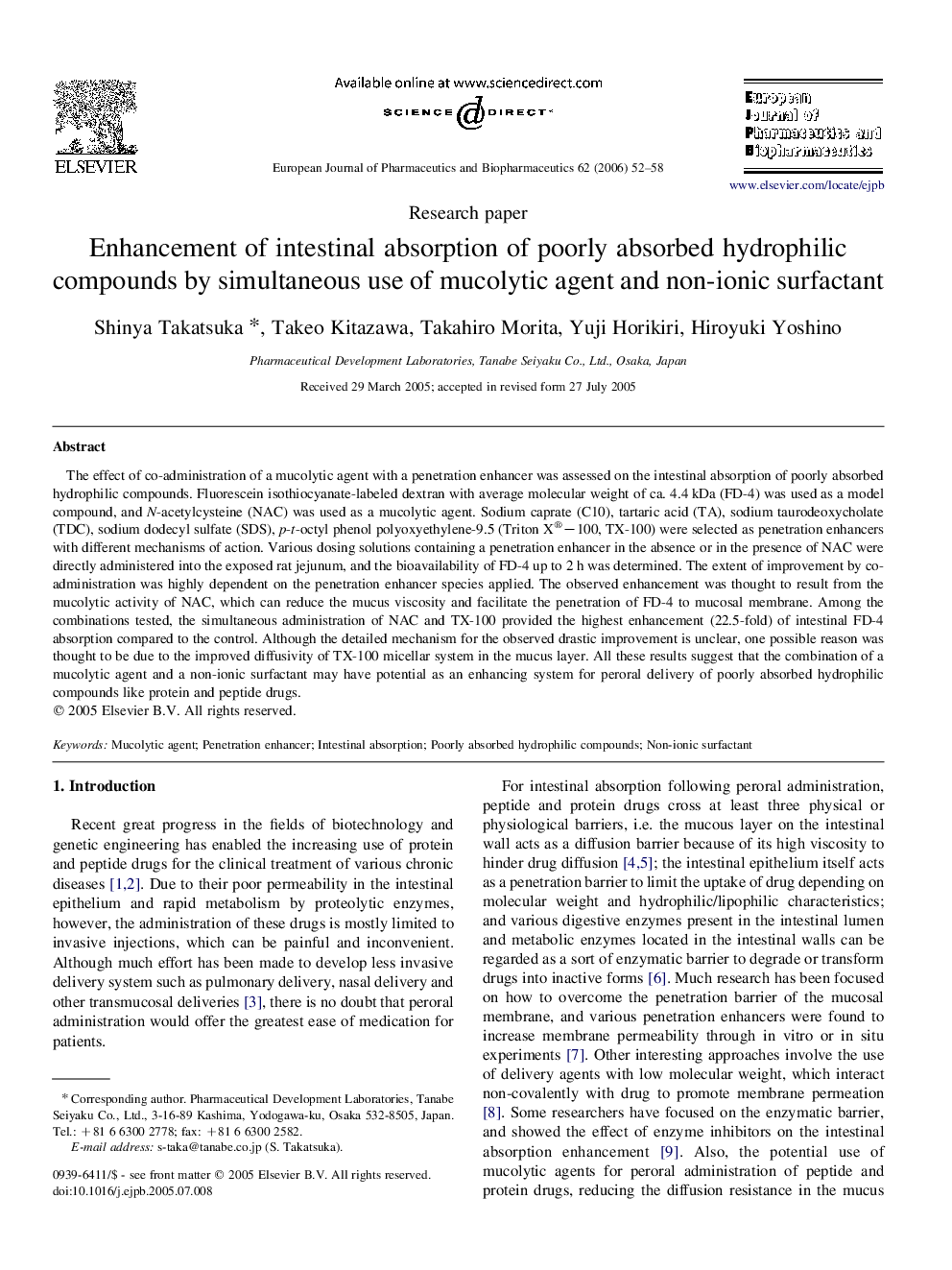| Article ID | Journal | Published Year | Pages | File Type |
|---|---|---|---|---|
| 2085077 | European Journal of Pharmaceutics and Biopharmaceutics | 2006 | 7 Pages |
The effect of co-administration of a mucolytic agent with a penetration enhancer was assessed on the intestinal absorption of poorly absorbed hydrophilic compounds. Fluorescein isothiocyanate-labeled dextran with average molecular weight of ca. 4.4 kDa (FD-4) was used as a model compound, and N-acetylcysteine (NAC) was used as a mucolytic agent. Sodium caprate (C10), tartaric acid (TA), sodium taurodeoxycholate (TDC), sodium dodecyl sulfate (SDS), p-t-octyl phenol polyoxyethylene-9.5 (Triton X®−100, TX-100) were selected as penetration enhancers with different mechanisms of action. Various dosing solutions containing a penetration enhancer in the absence or in the presence of NAC were directly administered into the exposed rat jejunum, and the bioavailability of FD-4 up to 2 h was determined. The extent of improvement by co-administration was highly dependent on the penetration enhancer species applied. The observed enhancement was thought to result from the mucolytic activity of NAC, which can reduce the mucus viscosity and facilitate the penetration of FD-4 to mucosal membrane. Among the combinations tested, the simultaneous administration of NAC and TX-100 provided the highest enhancement (22.5-fold) of intestinal FD-4 absorption compared to the control. Although the detailed mechanism for the observed drastic improvement is unclear, one possible reason was thought to be due to the improved diffusivity of TX-100 micellar system in the mucus layer. All these results suggest that the combination of a mucolytic agent and a non-ionic surfactant may have potential as an enhancing system for peroral delivery of poorly absorbed hydrophilic compounds like protein and peptide drugs.
